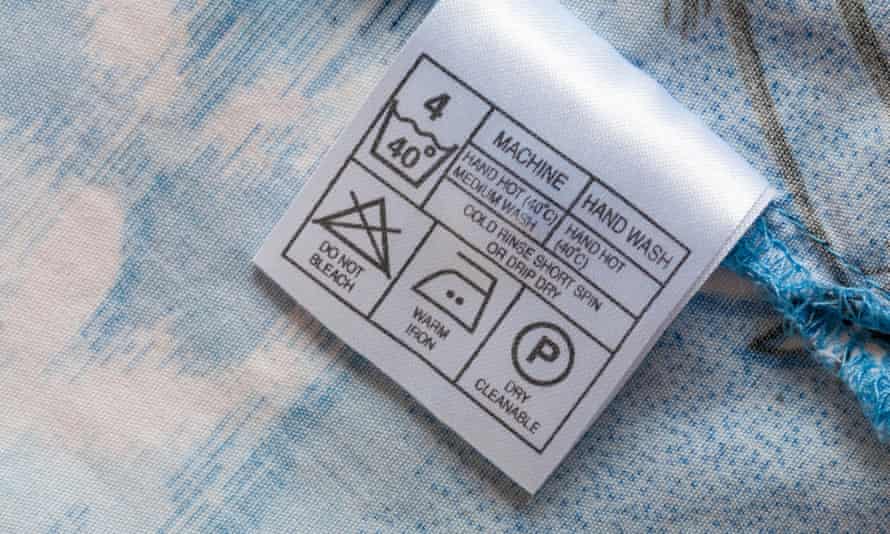
I consider a Saturday morning trip to the dry cleaners a very easy win. Trading crushed, dirty clothes for freshly pressed ones is super satisfying – a way to start the weekend with a small sense of accomplishment.
But I know not everyone shares my enthusiasm. For a lot of people dry cleaning is annoying and expensive. If you fall into this camp, sometimes it’s possible to handwash garments labelled “dry clean only” – but you should do so with caution.
There are multiple factors that dictate how a garment will respond to water, and they’re not always listed on the care label.
The trouble with labelling
The Australian Competition and Consumer Commission’s mandatory standards say care labels must provide instructions adequate enough to prevent clothes from being damaged if they are followed correctly. The guidelines also say providing overly cautious instructions such as dry clean only may breach the standards if the garment can safely be cared for in another way.
But unfortunately this does not stop brands from making guesses on the care instructions if they haven’t had time to run their own tests or received enough information from their fabric supplier, according to Howard Duffy, technical officer at the Dry cleaning Institute of Australia (DIA).
Making an assessment of whether something labelled dry clean only can be washed with water requires more information than garment manufacturers are required to provide.
To make a foolproof assessment, you would at least need to know: the fibre composition and construction; the type of dye used; whether chemical finishes have been applied to the fabric to give it sheen or extra body; whether the fabric has been pre-shrunk; how the buttons, zips or other hardware might be impacted by water; and whether the lining will respond differently to water than the garment’s main fabric.
While a really diligent and transparent brand or retailer might be able to share this information, disclosure at this level of detail goes far beyond standard practice.
Pay attention to texture
Generally speaking, you should be able to handwash anything made from cotton, linen or a polyester blend, unless it has been treated with chemicals to give it a different feel or stiffer appearance. “These finishes are sometimes soluble in water and washing may cause the fabric to lose its body or feel,” Duffy says.
Daniel Hays, the managing director of laundry equipment supplier Spencer Systems, says “if you lose the body and texture of the fabric, it can be impossible to recover” without professional equipment and knowledge.

Similarly, silk can be handwashed, but doing so may change the lustre and drape of the fabric. If you have a silk garment made from particularly delicate silk, like chiffon or georgette, it’s best to take it to a dry cleaner as these fabrics are more likely to be affected by water.
Treat lined clothes with caution
It’s worth assuming that anything you wash with water may shrink slightly. But often fabrics are labelled as dry clean only because they have not been pre-shrunk by the manufacturer. If this is the case, contact with water might cause them to shrink dramatically.
The DIA’s Mark Ryan says you have to be particularly wary of this when a garment has lining. If the outer and inner fabrics respond to water differently, you might find yourself with a misshapen jacket, or a skirt with a lining that pokes out the bottom of the hem.
Similarly, if you’re going to wash a wool or cashmere jumper labelled dry clean only, keep in mind that agitation in the washing machine can cause a felting reaction in the fibres. So you should only wash these garments by hand using a wool-specific pH neutral detergent.
Keep an eye on the dye
Generally speaking, the colour fastness of your garment will depend on the type of dye used, as well as its fibre content. Porous fabrics like silk, cotton and linen take well to natural dyes, but according to Ryan these dyes are “not solvent resistant and to dry clean them would result in a colour fade or change”, and you shouldavoid taking them to the dry cleaner.

He also warns that some dyes will “bleed in water”. If you have a garment made of black and white material, washing it can turn the white parts grey. This kind of leakage is also worth keeping in mind if something is embroidered with colourful threads.
A good rule of thumb is that deep, vibrant colours are more likely to change or bleed in water, Hays says. “Red pigment is inherently unstable,” he says, whereas “pastels won’t be as affected.”
How a garment was dyed can be impossible to determine, so if you are worried about a blouse or dress fading, or a particularly beautiful print bleeding, stick to the instructions on the care label.
Finally, if you have followed the care instructions correctly, and something still goes wrong with a garment the first time you wash or dry clean it, remember your rights as a consumer and make a complaint.



